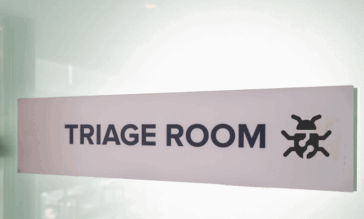A Closer Look at Prospect Medical Holdings’ Ransomware Nightmare

Medical service providers have increasingly become prime targets for cyber attackers, primarily due to the wealth of personal and medical information they store. It’s crucial to understand the magnitude of such breaches, not just in terms of numbers but also the financial implications. From 2017 to July 2023, healthcare organizations have borne costs exceeding $39 billion due to data breaches, many of which stemmed from hidden threats in files, as highlighted in a recent report by Comparitech.
The recent breach at Prospect Medical Holdings serves as yet another indicator of the growing threats facing the medical industry. Ransomware has inhibited operations and disrupted patient care. Explore the impact of this incident and solutions to avoid similar breaches in the future.
Ransomware’s Real Risks
Ransomware attacks are no longer just a concern for the IT departments of large organizations; they have tangible, often severe consequences for essential services, as evidenced by the recent disruption to Prospect Medical Holdings, and recent disruptions in Managed Care of North America, PharMerica, and Regal Medical Group.
As of right now, we currently have a high-level timeline of the events that took place.
- Rhysida ransomware started seeding the attack by spreading infected files via phishing emails and Cobalt Strike.
- August 3, 2023 Prospect employees become aware of the attack, with staff discovering their computers are disabled by ransomware.
- Later that day, Prospect began shutting down systems and network links to contain the incident.
- As a result, all patient records and management must revert to paper, slowing treatment and impeding care.
- Prospect began the arduous process of restoring systems to functionality and re-establishing network connectivity across their organization.
- August 24, 2023, Rhysidia claims credit, advertising their stolen goods on the dark web.
- September 2023, Prospect announces that their “computer systems are now back up and running”
- For the next few months and possibly years, Prospect will be investigating the full scope of the attack and managing HIPAA-related fallout from the incident.
For Prospect Medical Holdings, which serves many patients across the United States, ransomware significantly impacted operations. The immediate effects were felt in the trenches of patient care, with a forced return to paper-based data entry that greatly slowed down operations. Once the breach is resolved and systems are fully operational, the lengthy process of pushing data back into digital systems can begin, which comes with myriad challenges. Errors could creep in during this process, resulting in inaccurate patient records. The ripple effects are profound: valuable time is wasted as staff grapples with these challenges, all while balancing the pressing need to attend to new patients.
Additionally, with this kind of breach, there’s the looming specter of HIPAA violations. Such violations come with direct financial implications due to hefty fines. Yet, the monetary cost is just the tip of the iceberg. The impacts include:
- The potential loss of trust from patients.
- Damage to the organization’s reputation.
- Increased scrutiny from regulatory bodies.
Prospect Medical Holdings will need to calculate potential data loss and determine its breadth and depth.
Patients, in particular, bear the brunt of these breaches, facing significant risks when their personal and medical data is compromised. Beyond immediate concerns about their health records, they are exposed to potential fraud and identity theft. In this digital age, where sensitive information can be weaponized against individuals, the necessity of cybersecurity within healthcare becomes more evident.
Stopping Ransomware Before It Strikes
The fundamental principle behind Content Disarm and Reconstruction (CDR) lies in its capacity to eliminate concealed threats before they infiltrate systems. This powerful technology focuses on safeguarding the primary gateways through which file-based malware often gains access, such as emails, browser traffic, and data stored in cloud services. By proactively monitoring and defending these critical entry points, CDR ensures a robust barrier against most concealed file-borne threats, significantly reducing the chances of ransomware attacks.
Lossless Defense in the Medical Field with CDR
In the medical realm, where data can equate to life-or-death situations, ensuring cybersecurity without compromising the integrity of crucial patient information is paramount. CDR offers an ideal solution by providing a ‘lossless’ defense mechanism tailored explicitly for such high-stakes environments. As CDR scans, disarms, and reconstructs potentially harmful files, it meticulously ensures that no valuable patient data is lost. Medical data includes sensitive patient histories, lab results, and treatment plans, shared in PDFs, image files, and even more complex files. Even a minor alteration or loss can have grave implications, from misdiagnosis to incorrect treatment protocols.
The indispensability of maintaining data integrity in the medical field cannot be stressed enough. Patient data represents more than just information; it’s a comprehensive narrative of an individual’s health journey. Any unintentional change or omission during the protection process can jeopardize patient care, leading to clinical inaccuracies and potential legal ramifications. CDR’s unique capability to offer robust protection while preserving every bit of medical data positions it as a gold standard in healthcare cybersecurity, ensuring that healthcare professionals can deliver care based on untainted and complete patient information.
Seamless Protection
Healthcare professionals require cybersecurity solutions that integrate effortlessly with their existing technological infrastructure without causing disruptions. CDR is precisely tailored to meet these needs. By seamlessly sitting in line with the current healthcare systems, CDR guarantees that protection is always active, securing patient data, lab results, and critical medical communications without additional steps or interventions. This ensures that healthcare workers can focus on what they do best—caring for patients—while being confident that their data and systems are safeguarded.
Moreover, in healthcare, where the stakes are incredibly high, a Zero Trust approach to cybersecurity is indispensable. When delivering patient service, providers don’t have time to worry about taking additional steps to ensure the files they are viewing are safe. Zero Trust solutions such as CDR that sanitize everything by default and without user intervention are vital to maintaining security without impacting their operations.
With CDR, this approach is realized by default; every piece of data, every file, and every digital interaction is methodically sanitized as it passes through the system. It operates on the principle that nothing should be trusted implicitly, regardless of its source. This proactive stance means that potential threats are neutralized before they can cause harm, all while operating silently in the background. This translates to peace of mind for healthcare professionals, knowing that their patient’s data and medical systems are constantly protected without manual oversight.
Votiro Prioritizes Patient Data Protection
Votiro is at the forefront of CDR technology, crafting state-of-the-art solutions tailored to the medical sector’s unique requirements. By recognizing the importance of patient data and the seamless operation of healthcare systems, our advanced CDR solution offers immediate protection against hidden threats, ensuring a reliable and rapid return on investment. Moreover, Votiro’s adaptable scaling caters to varying demands, allowing healthcare institutions to fine-tune processing bandwidth in line with their specific needs, guaranteeing optimal performance and patient data protection at all times.
Votiro’s medical-centric CDR protection is designed for smooth integration, built upon an API-focused framework, ensuring compatibility with existing healthcare systems. This emphasis on seamless implementation means that our cloud-based solutions can be up and running in roughly 10 minutes, while on-premises installations are completed in just 90 minutes, providing healthcare professionals with robust cyber defense without any delay.
Contact us today to learn how Votiro sets the bar to prevent new and existing hidden threats in files so that your employees and systems remain secure while maintaining productivity. And if you’re ready to try Votiro, start today with a free 30-day trial.
News you can use
Stay up-to-date on the latest industry news and get all the insights you need to navigate the cybersecurity world like a pro. It's as easy as using that form to the right. No catch. Just click, fill, subscribe, and sit back as the information comes to you.
Sign-up Here!
Subscribe to our newsletter for real-time insights about the cybersecurity industry.



